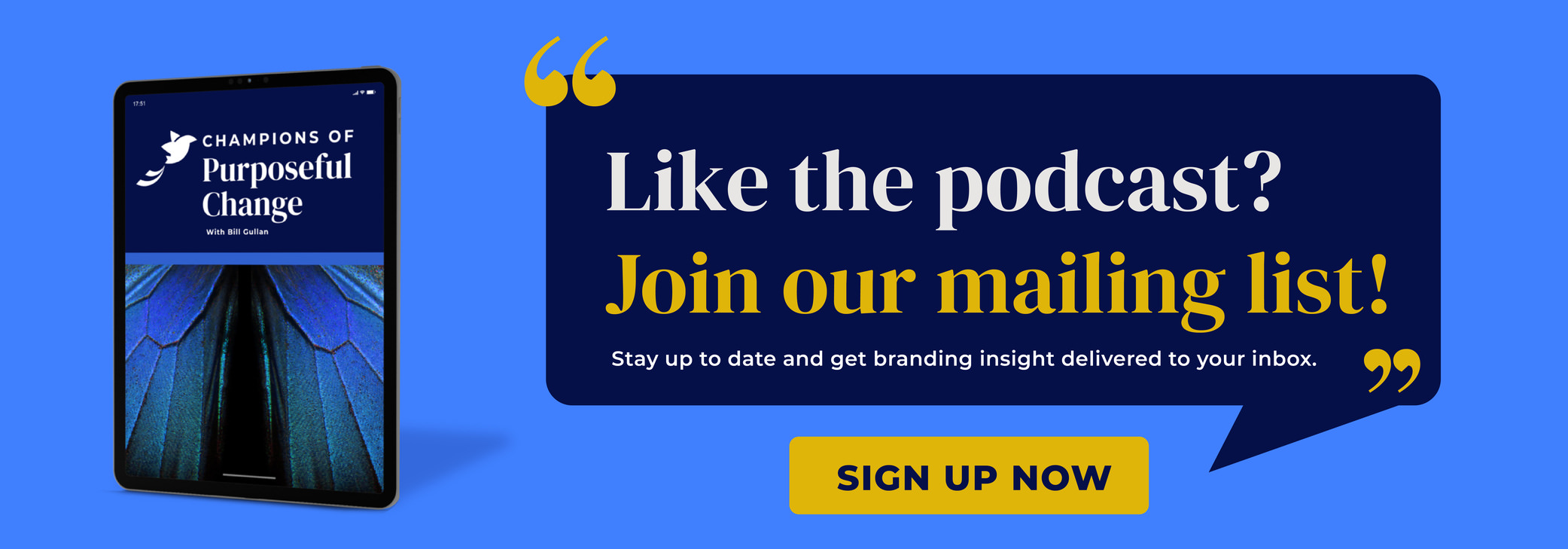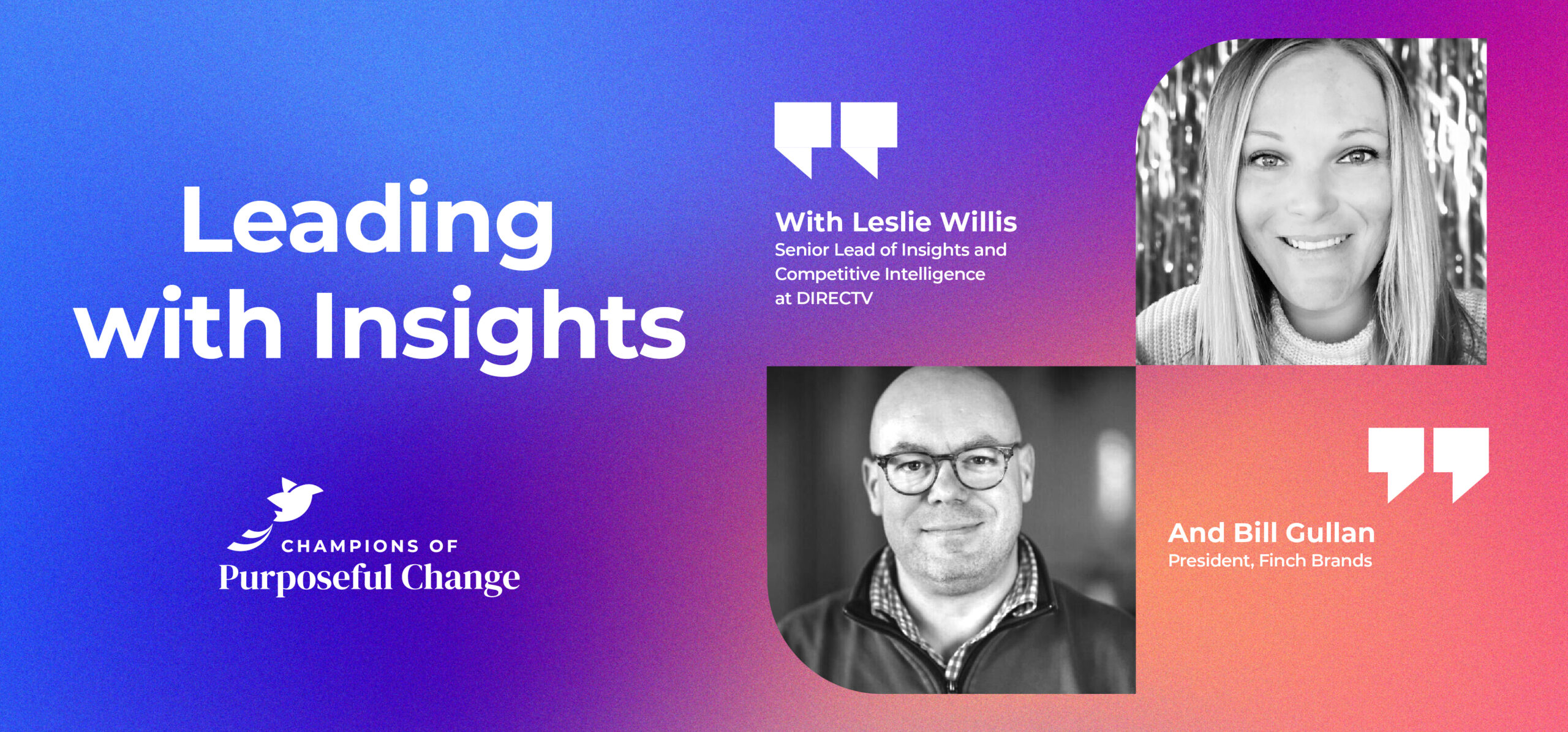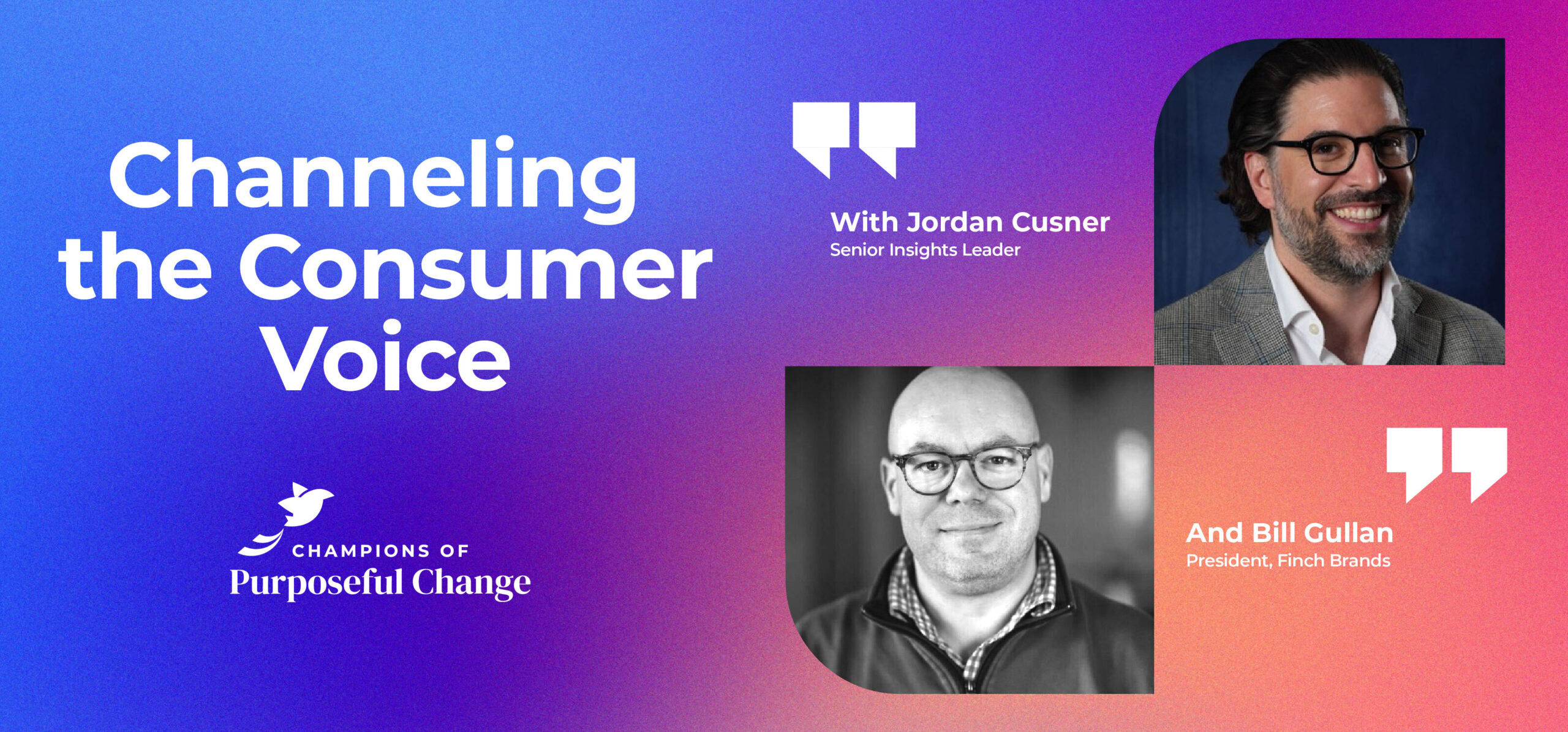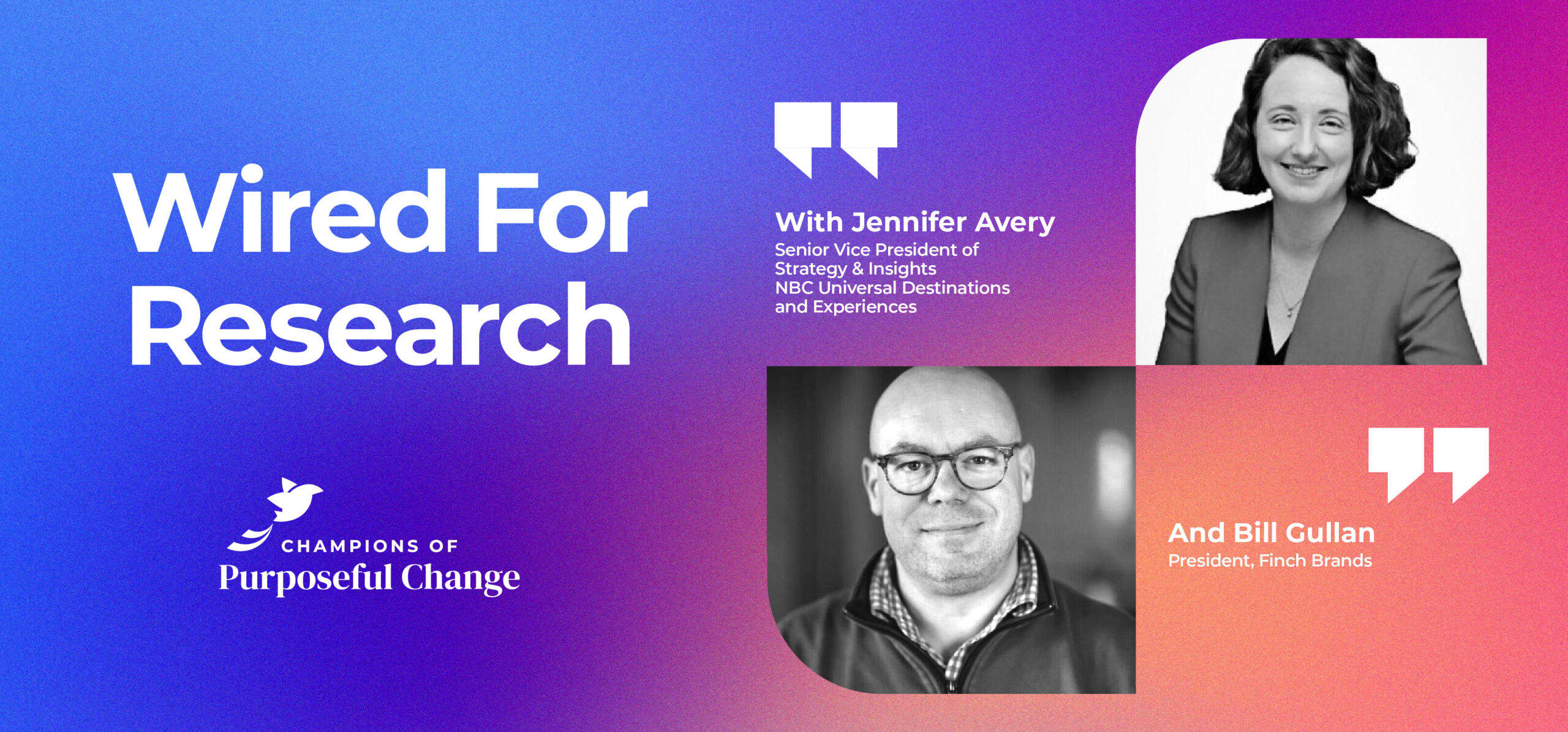One Big Idea: Get to the ‘Why’

It is easy to focus on the ‘how’ of one’s business — features, function, specs. The truly great brands somehow get to the ‘why.’ In this episode, Bill speaks about how and why this is so important.
Podcast: Download Subscribe: iTunes | RSSTranscription
Bill Gullan:Greetings one and all, this is Real-World Branding. I’m Bill Gullan, President of Finch Brands, a premier boutique branding agency. Speaking to you from a sweltering summer day in Philadelphia with today’s One Big Idea. This week’s One Big Idea is Get to the Why. This was inspired largely by our podcast interview last week with Lauren Boggi. Lauren is the founder and CEO of Lithe Method a very fast growth, high texture fitness brand that started and is still very strong in terms of the studios that they have where the unique cardio-cheer sculpting method is taught, learned, and loved. But the brand has extended very heavily into food, into apparel, into escapes and travel, as well as in the content like Lauren’s blog Fit, Hip, Healthy as well as social media everything else.
What is unmistakable about Lauren’s story is that the business really accelerated, or at least the sense of purpose around the business really accelerated, when Lauren got to the ‘why.’ Up to that point, it was about the what – it was about the workout, and the bands, and the real estate, and the teachers, and the floor, and everything else. It’s easy to understand the what, it’s easy to understand, for lack of a better phrase, the bricks and mortar, the trucks, the stores, all the things that are physical assets that underlie a business. But when you get to the why, you have the potential to motivate those around you, the potential to have a clear sense of purpose and deliberate sense of action every single day. The assets with which to motivate members of the team and those in your consumer base become so much easier so much clearer.
Nick Bayer, the CEO of Saxbys Coffee, also spoke several interviews ago about how there was a moment when they reached the why of making life better and understanding that was the role that Saxbys had to play. After that everything else became simple, not easy but simple and that the entire expanse of the growth of the business opened up in front of Nick. Just as it did for Lauren when helping people be fit, hip and healthy, there was really the answer to why Lithe Method exists and why Lauren’s in that business.
So some people have spoken about getting to the why and getting past the what, the physical elements that underlie a business. It’s not easy to do necessarily and it doesn’t always matter very clearly to how you think about growing a business when you start out. If you’re at that point you’re thinking about, ‘well I need X number of dollars to open a store or an office, to hire people or whatever it is.’ It’s very easy to get lost, not lost, but it’s very easy to get fixated on really important tactical things that are in front of you and I don’t think it’s a coincidence that Lauren and Nick found the why a couple of years in.
There’s this image of entrepreneurs that all of a sudden there’s a lightning bolt of inspiration or a light bulb goes off and they have their why and they’re mission driven from day one. That isn’t always true. A lot of times, getting to the why really requires entrepreneurs or business and brand builders to reach a level of increasing operational complexity and find that moment where they need to take a step back and to reaffirm the principles that may have existed in their heart and mind even if they hadn’t defined it from day one. It’s really hard to define from day one, but once you’re a couple years in, a couple stores in (a couple studios in Lauren’s case), and thinking about what the next step is, often that is the time when one can find the why or even revisit the why.
There are components to defining what that why is, or documenting it for the use of yourself or the team. Vision and Mission is essential to that – having strong thinking that drive toward documented Vision and Mission. In some ways, going through the process is as important as defining the content. It always breaks my heart to see organizations who have read the articles about why vision and mission is important, then you get into their organization and you see that it’s a plaque on a wall that nobody looks at, or maybe it’s a dusty binder on a shelf somewhere, but it isn’t the animating, the dominating North Star that should be central to decisions, to training in onboarding and everything else.
Vision/Mission has the potential to be that, and folks who either don’t value its importance and gloss over the whole thing, or do it halfway because they read an article or read in a book but they don’t really feel it, are really missing an opportunity to provide clear direction both of themselves as well as to those around them. We will do a separate One Big Idea on Vision and Mission and how to build it, how the statements differ from one another, what their purpose is etc.
One of the great things about discovering the why, and Lauren in her business is a perfect example of this, is that in some ways it begins to set guardrails for brand elasticity. By elasticity I mean frankly how elastic is the brand in terms of product categories, where do you have permission to enter. There is one way to think about it which has to do with product categories – what are the things that are adjacent to your core product category where your unique statement and energy and aesthetic will effectively translate into some form of built in advantage.
For Lauren, who started with building a workout, it made perfect sense, in fact people were asking her, because not only was she a symbol or emblem of a particular workout, but of an overall life that was well lived, that was fit, that was hip, that was healthy to use her words. So it made perfect sense to move into the nutrition space with foods, it made perfect sense to move into apparel. Some of the things Lauren is thinking about the future like beauty, cosmetics etc., makes perfect sense, or the life escape where they go with a small group of folks to Jamaica or wherever and really focus over a couple day period, not only on treating their body right through workouts but on the restorative nature of an experience or an escape as they call it. So brand elasticity in terms of product categories is best determined when you have the why in place.
Another way to look at brand elasticity has to do with price point, you look at brands that oftentimes seek to either go up market, to reach a different consumer or seek to go down market to create greater volume. Only if you have uncovered the central fundamental elements of what your brand stands for, why it exists, and for whom it is important, can you really think through the business and brand strategy associated with elasticity on price. Brands earn the right sometimes to go out of market, but it’s much easier for a brand that begins early in the premium part of the marketplace to then sort of diffuse into more affordable lines or price points. So brand elasticity is an important concept that comes out of finding the why.
We spoke last One Big Idea about how Brands are Built from the Inside Out. Getting to the why gives you the greatest opportunity to motivate and galvanize the team around you – to make sure everyone is centrally and deeply committed to the overall guiding purpose of the brand and of the business.
A couple things to think about in the process of getting to the why because again it doesn’t always happen through a lightning bolt it doesn’t always happen on day one. Often you’re a bit in before you begin to affirm or reaffirm you’re thinking around why you get out of bed every day. I’ll give you three quick ones and then we will adjourn.
The first thing is to know yourself. Some people get into business because they want to make money. We celebrate that, reward that, but often even if that is an overriding or important benefit in terms of how you choose to do that, you reveal a lot about yourself. In Lauren’s case when she was a cheerleader at the University of South Carolina, then fell and was injured, and she told the story last week I won’t belabor it, but there was a certain point at which she realized that the real strength of cheer as a method of exercise and as an athletic pursuit is to make people happy and lift their spirits. So Lauren was able to uncover that it was important for her to put smiles on faces of folks and the thing that she was passionate about, which was cheerleading then merged with principles of Pilates, had a really strong impact in terms of making people happy and to live the kind of life they want to physically as well as emotionally. So Lauren knew herself and knew the effect that the things that she valued had on her as well as on others. That was an important first step to getting to why for her.
Knowing your customers, especially if you’re a little bit further down the path rather than just day one before you have customers. If you’re Nick Bayer at Saxbys or you’re Lauren at Lithe, then you take a look at the kind of folks that the initial forays into the business have attracted. Really knowing them and I don’t mean only just their demographics, how much they’ll pay, or what they do for a living, but really knowing them – their attitudes, their behaviors, their fears, what they value, what they see and seek out of their interactions with you as well as with other brands, companies, and businesses that they insinuate themselves into a soul or into a value system.
I think Lauren probably found that her early customers, Lithers as they’re now known, really found value in the impact of the work. I don’t mean impact in terms of your joints, I mean how it made you look, how it made you feel, how it made you think about yourself and all the other things that were in front of you that day. So when she got to her why which was Fit, Hip and Healthy, I would like to think and she could probably confirm that this was in some way drawn from an aggregate profile of how people were interacting with her business and what they were taking from it, what the benefits were.
Which brings me to the last thing which is think about benefits. For example, when we work with clients in technology or even when we deal with clients in nonprofit or consumers across the client roster, oftentimes the real positioning breakthroughs are found when we encourage our clients to think about the benefits of when they do their job well. It’s very easy to get lost in features, it’s very easy to get lost in technological innovations, it’s very easy to get into the weeds, and that stuff is important. Even in the nonprofit world where it’s about impact, it is very easy to talk about programs and not about impact. Always looking at the end point and working backwards, focusing on the benefits of why a job well done for your business, what is created via that job well done – whether it’s a great muffin, a wonderful software package, or a program that benefits many people. If you can get past the nuts and boltsy elements that make something work and get into why it matters, you will get ever closer.
So I think in Lauren’s case (again only putting words into our mouth, but I think it’s faithful to what she told us last week) when she got to think about the way that Lithe Method made people feel and some of that was probably very specific pant sizes or inches or numbers. A lot of it was probably non-specific clear head, sharp, get skinny and all the different things that being active works out and works on within one’s life.
So I’ll stop there but Get to the Why is this week’s One Big Idea. In some ways it is easier said than done, but I’ve hopefully given you a couple of things to think about, some structures with which to approach this for yourself.
By the way, one book that I always used to give to colleagues and certainly the entry level folks was a book called ‘The Brand You 50’. It was one of Tom Peters’ earlier works and in true Tom Peters’ style, it’s a little bit over the top. This Get to the Why isn’t really just relevant for businesses and brands, it’s also relevant for individuals when you think about your career path, what you value, and what you are distinctly capable of doing and why that matters. In the book Brand You, I think Tom Peters’ main thesis was to turn individuals from employees into professional services companies within their own organizations, to build their own brands. It’s not personal branding in kind of the sense you hear a lot today which is about ‘how do I get Twitter followers and etc.’ This is about how you build a sense of self that is consistent and powerful and of great value and relevance to the people around you. So getting to the why is a way of living, not just a way of building businesses and brand.
As we sign off, three ways as always to support what we’re doing here at Real-World Branding. One, we would love it if you subscribe through the App Store of your choice. One of these will come in every week, as noted in off weeks we do One Big Idea, such as today and the other weeks we have interviews with brand and business builders from different categories with interesting stories and interesting lives. So please subscribe and you’ll make sure that you don’t miss a thing.
We’d love it also, again if we’ve earned it, if you would give us a rating of five stars, if they had six maybe give us six but they only have five in the App Store of your choice. Not only does it make us feel good or give us a sense of where we need to improve but it also, at least we’re told, ensures that what we’re doing is visible to those who might find value in it.
Then lastly, let’s keep the dialogue going. Really enjoy hearing from listeners really enjoy hearing questions, comments, ideas for future guests, questions you’d like for me to ask future guests, either way let’s keep the dialogue going. Best way to do that is to find me on Twitter @billgullan or @FinchBrands, Finch like the bird. Signing off from the Cradle of Liberty a wonderful day to all, stay cool.







